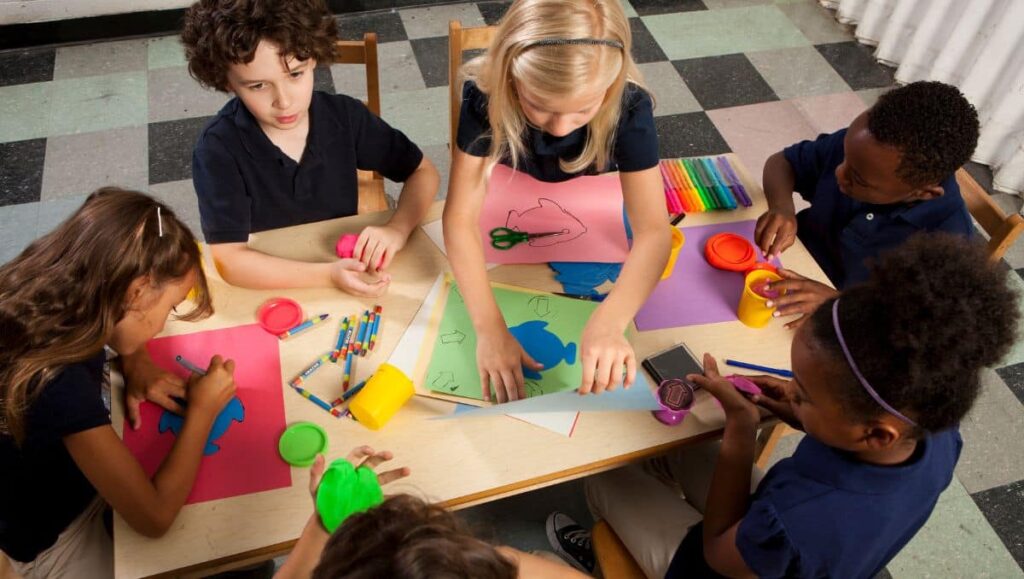Being a vital component of a well-rounded school’s curriculum, art education is crucially important for student development. From developing creative and inventive skills to improving academic performance, art education in schools is essential to integrate with other academic subjects.
Incorporating art education can help students learn, engage, and develop passion and skills in various art forms, including sculpture, drawing, music, painting, dance, theater, etc. This blog will discuss the value of art education in schools for students’ growth.
Importance of Art Education in Schools
Value of Art Education in Schools for Students’ Growth
1. Developing Imaginative and Creative Skills
Art education’s artistic activities offer students the chance to observe, learn, and think about several new things. The development of imaginative and inventive skills not only assists with the completion of their artistic tasks but also helps students see and observe the world in new ways. Teachers can incorporate art education in schools through various classroom activities like drawing, painting, etc. that help in nurturing skills essential for children’s personal and career growth.

2. Enhancing Cooperation and Communication Skills
Art education in schools includes collaborative projects where students cooperate to achieve a common objective. These projects can greatly enhance the cooperation skills among students. The different mediums like acting in a play, performing music, or working on a painting, etc., offer students the opportunity to listen to others’ ideas, contribute their own strengths, and express their thoughts. These collaborative experiences positively foster the enhancement of the communication skills of students.
3. Encourages Cultural Awareness and Understanding
Through different activities, art education in schools exposes students to art forms from different cultures and historical periods. The insights into different cultures and traditions assist in fostering cultural awareness and understanding among students. Preservation of culture is positively impacted by encouraging students to embrace their artistic heritage. Through art education, students get the chance to connect with various regional, national, and global cultures that promote respect in students for cultural diversity.
4. Boosting Mental Health and Well-Being
The various forms of art help students express their emotions and experiences, which can greatly help them in relieving stress. Students who receive art instruction in schools also greatly benefit from becoming more self-aware of their ideas and emotional states. Apart from mental health, art therapy fosters the overall well-being of students by boosting their self-confidence, interpersonal relationships, and other social abilities.

5. Improving Academic Performance
Art education in schools assists students in developing skills to solve creative challenges that help them in other academic subjects. The critical thinking and problem-solving skills students develop through indulging in various art activities help them perform well in their core subjects. Research has also shown that children involved in art education programs are more likely to show stellar academic excellence.
6. Improves fine motor skills
Enhancement of fine motor skills is another major benefit of art education in schools. These skills can be described as a child’s ability to make precise movements with their hands, fingers, etc., which involves the coordination of joints, muscles, and nerves. From holding a pen or pencil to drawing pictures and learning instruments, each activity of art programs helps enhance fine motor skills in students by stimulating their hand-eye coordination. By stimulating brain development, art education assists students to understand new concepts more effectively.
8. Preparation for a Range of Creative Professionals
By incorporating art education with other core academic subjects, students can be prepared for a range of creative professions, including architects, designers, artists, music educators, animators, photographers, videographers, etc. Through creative tasks of art education in schools, students can develop an understanding of their passion and creative skills that they might continue in their professional lives.

9. Strengthens Focus and Discipline
Being focused and disciplined is essential for success in personal and professional life. Students are encouraged to stay focused and disciplined on their goals and everyday tasks by keeping away distractions. Development of a strong work ethic from an early age can help students to give the best results in their academics and career goals.
10. Time Management Skills
Apart from the development of strong memory and concentration, art education in schools helps students with the importance of careful time management. It also assists students in creating a perfect daily schedule and prioritizing tasks depending on their urgency. Demonstration of time control behavior in daily life can result in the development of better time management abilities in students.
Conclusion
Art education in schools has immense value as it fosters the development of several behavioral and social abilities essential for students’ well-rounded development. Sanjay Ghodawat International School, Pune with top-notch infrastructure features separate spaces for art education programs to develop students’ artistic talents and abilities.
Through its robust and well-rounded curriculum, which has a special place for art education, SGIS Pune nurtures creative and inventive skills in students along with offering excellence in other academic projects. Our team of knowledgeable teachers creates a supportive learning environment by encouraging students to indulge in various artistic and learning activities.
Also read – Effective Tips for Long Study Hours and Staying Productive








Leave a Reply